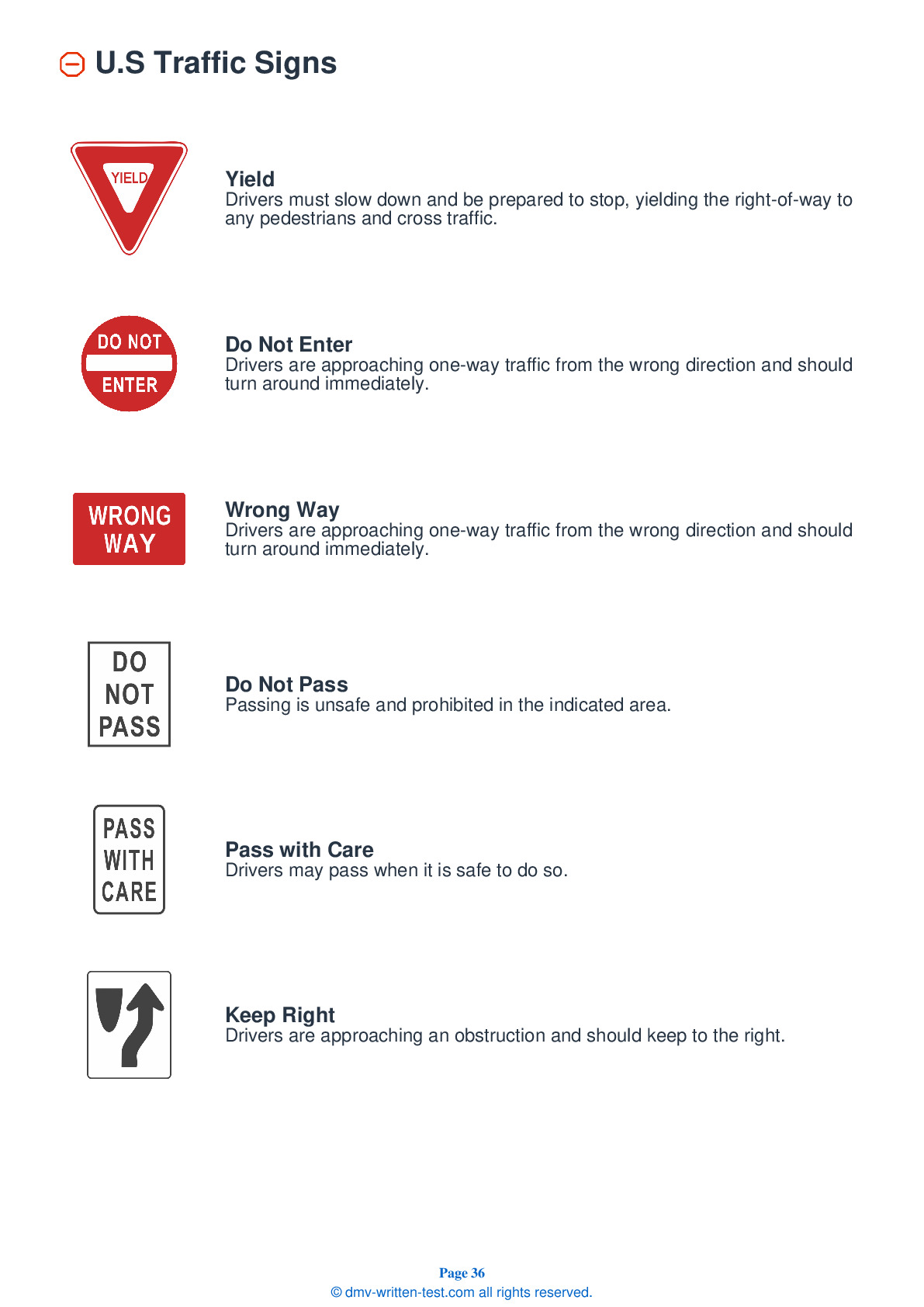2025 Maine Permit Test 17
The following questions are from real DMV written tests. These are some of the actual permit questions you will face in Maine. Each permit practice test question has three answer choices. Select one answer for each question and select "grade this section." You can find this button at the bottom of the drivers license quiz. For a complete list of questions and answers for Maine please visit https://cheat-sheets.dmv-written-test.com/en/maine/car.
Number of Tests
Number of Question
Passing Score
51. When driving on the highway, consistently looking far ahead of your vehicle:
Explanation
To avoid the need for last-minute braking or turning, consistently watch the road far ahead of your vehicle. By looking ahead and being ready to stop or change lanes if needed, you can drive more safely, save fuel, and help keep traffic moving at a steady pace.
52. When you become too drowsy to focus on driving, your safest option is to:
Explanation
When you are tired, you cannot drive as safely as you can when you are well-rested. Your reactions are slowed and your decision-making skills are reduced. If you become drowsy while driving, leave the road and rest.
53. You are involved in a minor collision at an intersection. There are no injuries and there is very little vehicle damage. You should:
Explanation
After a collision, if no one has been injured or killed and you can safely do so, you should move your vehicle out of the traffic lane.
54. When you are behind a motorcycle, you should:
Explanation
When following a motorcyclist, allow for at least a three- to four-second following distance. Motorcycles can stop quickly and following them too closely endangers your life and that of the motorcyclist. If the motorcyclist should fall, you need extra distance to avoid the rider. The chances of a fall are greatest on wet and icy roads, gravel roads, and metal surfaces such as bridges, gratings, and streetcar or railroad tracks.
55. A driver entering public traffic from a driveway or private road:
Explanation
If you are entering traffic from a driveway or private road, you should yield to drivers already on the public road. Merge safely into traffic when you are able to do so.
56. When driving in fog, you should use your high beam headlights.
Explanation
You should use your low beam headlights when driving in fog. High beam headlights may cause the light to reflect off of the fog and into your eyes.
57. You notice a vehicle defect which may affect the safe operation of your vehicle. You should:
Explanation
Any defect that may affect the safe operation of a vehicle should be corrected as soon as possible. Defects should be corrected before the vehicle is driven.
58. On a freeway, you should look farther ahead than you would on a city street:
Explanation
On the freeway, be ready for changes in traffic conditions. Watch for signals from other drivers. Expect merging vehicles at on-ramps and interchanges and be prepared for rapid changes in road conditions and traffic flow.
59. You must yield to other drivers:
Explanation
You must yield to other drivers when entering a street from an alley, driveway, or garage. You must also yield to pedestrians who are on an intersecting sidewalk.
60. If you need to drive in foggy weather:
Explanation




